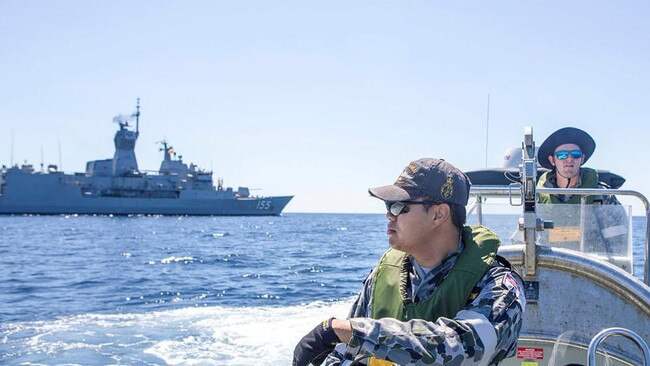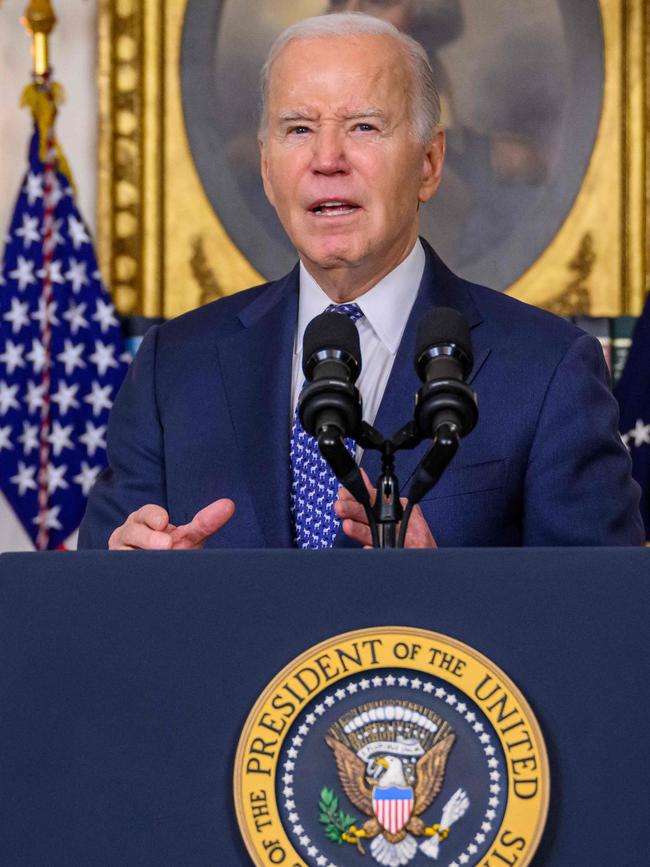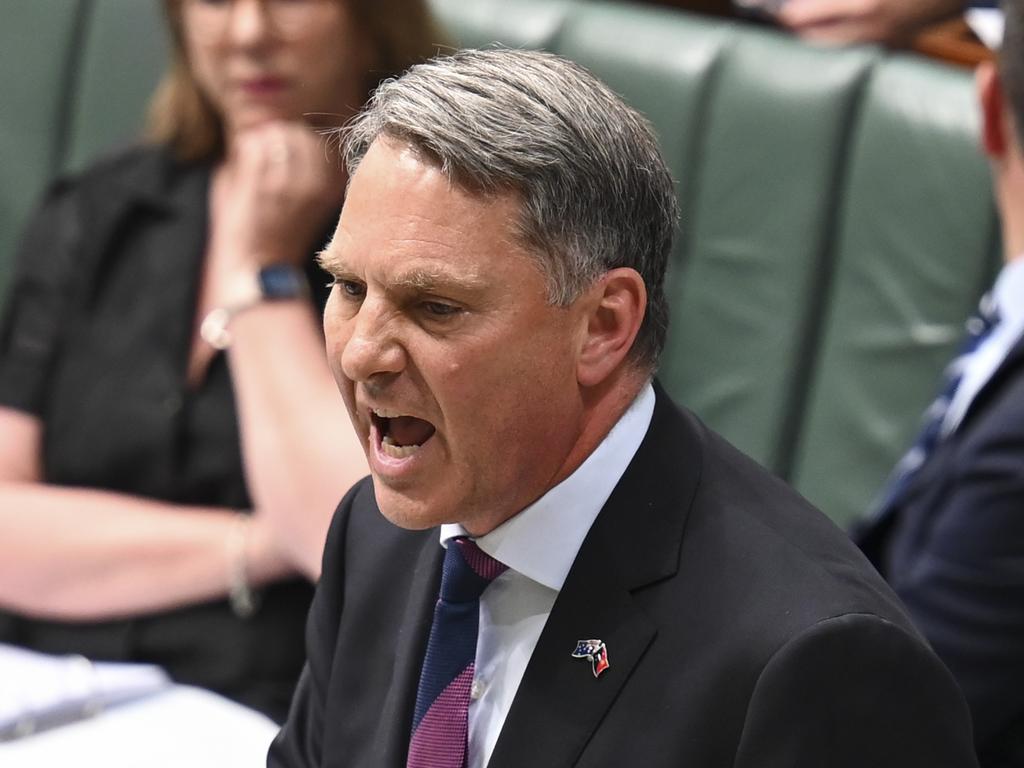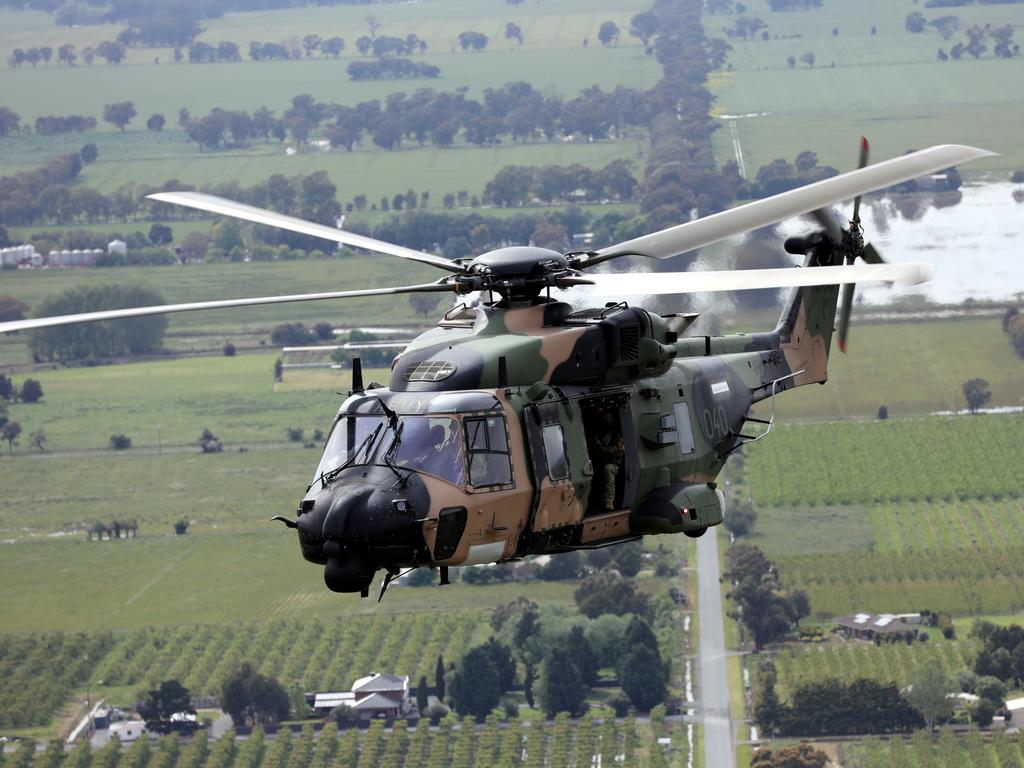
Marles has said it’s likely to be the most significant work his government does in defence other than the Defence Strategic Review and AUKUS nuclear-powered submarines.
Here’s a small wager. Although it will proclaim grandiloquent language, there will be almost nothing in terms of new capabilities in the next decade.
So far the Albanese government has made a fantastic cock-up of defence, willing to talk big but failing absolutely in delivery. Just lately Marles has taken to blaming the Defence Department and Australian Defence Force leadership in an unseemly war of leaks.

Marles’s first big decision in the portfolio was his first big mistake. He reappointed, or continued the appointments of, all the senior military and civilian defence leaders. Marles argued then that the gross failures in defence were entirely the fault of the previous Coalition government.
Now, Marles argues exactly the opposite. The dismal performance of the Albanese government is apparently entirely the fault of the Defence establishment, which is “on a journey” and still “has a way to go” before it reaches “a culture of excellence”.
What a difference in outlook being in office causes!
If Marles wanted to send a message of cultural change he had to change the personnel at the top. Without overdoing the historical comparison, Abraham Lincoln knew he had to destroy the Confederate Army. His generals didn’t want to do this. So Lincoln fired one general after another until, in Ulysses S. Grant, he found one who would actually carry out government policy.
It goes without saying, Richard Marles is no Abraham Lincoln.
Before we get into the weeds of the surface fleet review, let’s pull back for a wider look at context.
Within the past few days we’ve had the President of the United States, Joe Biden, described by a special counsel appointed by Biden’s own Attorney-General as being mentally unfit to stand trial and incapable of remembering basic information like when he was vice-president.

A day or two later we had his likely Republican challenger, Donald Trump, declare that he would “encourage” Russia to attack NATO allies who had been delinquent in funding their own defence. Meanwhile the US congress is holding up $US60bn ($91.9bn) in aid for Ukraine and Israel, two allies fighting wars and not asking for the sacrifice of a single American soldier in their defence.
It would be difficult for anyone to be more pro-American than I am, and I still think the Americans will ultimately prove reliable and the US system will overcome Trump’s gross, irresponsible, offensive tongue and Biden’s increasingly feeble brain.

But still, this is not your grandfather’s United States. Any American ally who decides, as the Albanese government has effectively done, that it will take no serious measures in its own self-defence but leave everything to the Americans is, at best, intensely irresponsible.
The priority in this environment should be to create strategic weight and deterrent capability in our own right, which we can also use, of course, in our close alliance partnership with the US.
We are doing nothing like that at the moment. Nor, so far, do we have any plans to do anything like that. My melancholy guess is that next week’s statement will contain all the familiar platitudes, and eye-watering sums of money off in the distant horizon, and nothing much of consequence in the next 10 years.

At the moment, our surface fleet consists of three air warfare destroyers with 48 vertical launch system missile cells each, and eight Anzac frigates with eight VLS cells each. We are halfway through building 12 offshore patrol vessels, which are the size of small frigates or corvettes but have no war fighting capability. They don’t have a military skin that could withstand combat and they don’t have any weapons to speak of.
So far the only plan for new surface fleet capabilities is the disastrous Hunter-class frigates program which by June 30 we will have already spent more than $4bn on.
This is supposed, eventually, to furnish nine frigates designed for anti-submarine warfare. We have not started to build even the first of these. Our insistence on putting our own special radar on them, and the Aegis combat system, has contributed to a massive blowout in their size. If everything goes according to schedule from here, we’ll get the first Hunter in service by 2032 or 2033.
These Hunters, now set to weigh 10,000 tonnes each, have only 32 VLS cells each. They are, as countless retired admirals have pointed out, completely undergunned for modern warfare.
The ABC has reported this week that the Hunter program is secure for at least six ships. If that’s right, it may be that ships seven to nine and beyond are more modern and combat-capable missile destroyers, with 96 VLS cells. The existing Hunter design will be radically outgunned in any future conflict. The idea is you would send it out in tandem with an AWD. But we have only three AWDs.
Logically, if the first six Hunters are the undergunned and overweight anti-submarine frigates, ships seven and beyond will not come into service before the mid-2040s at best. By then they would replace the AWDs as well as the Anzac frigates. If something like this is the shape of what Marles announces, it represents a complete failure by the Albanese government.
We would not get a competitive warship before the mid-2040s. Yet the government has told us, time without number, that right now, today, we face the most dangerous strategic circumstances since World War II.

Former Defence official Marcus Hellyer, whose knowledge of the defence budget is peerless, points out: “Continuing with the Hunter program but in reduced numbers is almost the worst outcome of all. It doesn’t get you any ships any faster, it doesn’t free up money for smaller combatants, and it probably drives up the unit cost of the Hunters you do get.”
The offshore patrol vessels have also had their share of troubles. But whether they work perfectly or not, they are irrelevant to combat. The government could terminate the number of OPVs at six and get the company, Luerssen, to build corvettes, which it already builds for other nations, instead.
Corvettes are small combat ships but they can carry a lot of missiles and pack a lot of punch. But to do that with maximum speed the government would have to accept the corvettes just as they are. It’s because we added Australian radar and American combat systems that the Hunters have become such a mess.
If the Defence establishment, or the government, actually thought we might one day have to defend ourselves, or even fight alongside the Americans but take real responsibility for serious, substantial conflict, they would be getting strategic quantities of ready-made stuff quickly. Instead, despite countless contrary cliches from government, we still design exquisitely bespoke, orphan platforms that take forever to deliver, in tiny quantities, to provide minuscule hi-tech niche additions to US taskforces.
This hopeless, defeatist, dangerously unrealistic attitude, wilfully blind to everything happening around the world today, is shared not only by the Defence establishment but by the Albanese government itself. It shows this because it has provided no new defence money (actually less than the Morrison government envisaged in forward estimates), and has approved every decision and non-decision Defence has made.
In the end, Anthony Albanese and Marles are responsible for this shocking and dismal outcome.








Next week Defence Minister Richard Marles will release the Albanese government’s response to the surface fleet review, which it has had since last September. This will determine the future of our surface navy: destroyers, frigates, offshore patrol vessels and anything else we might dream up.